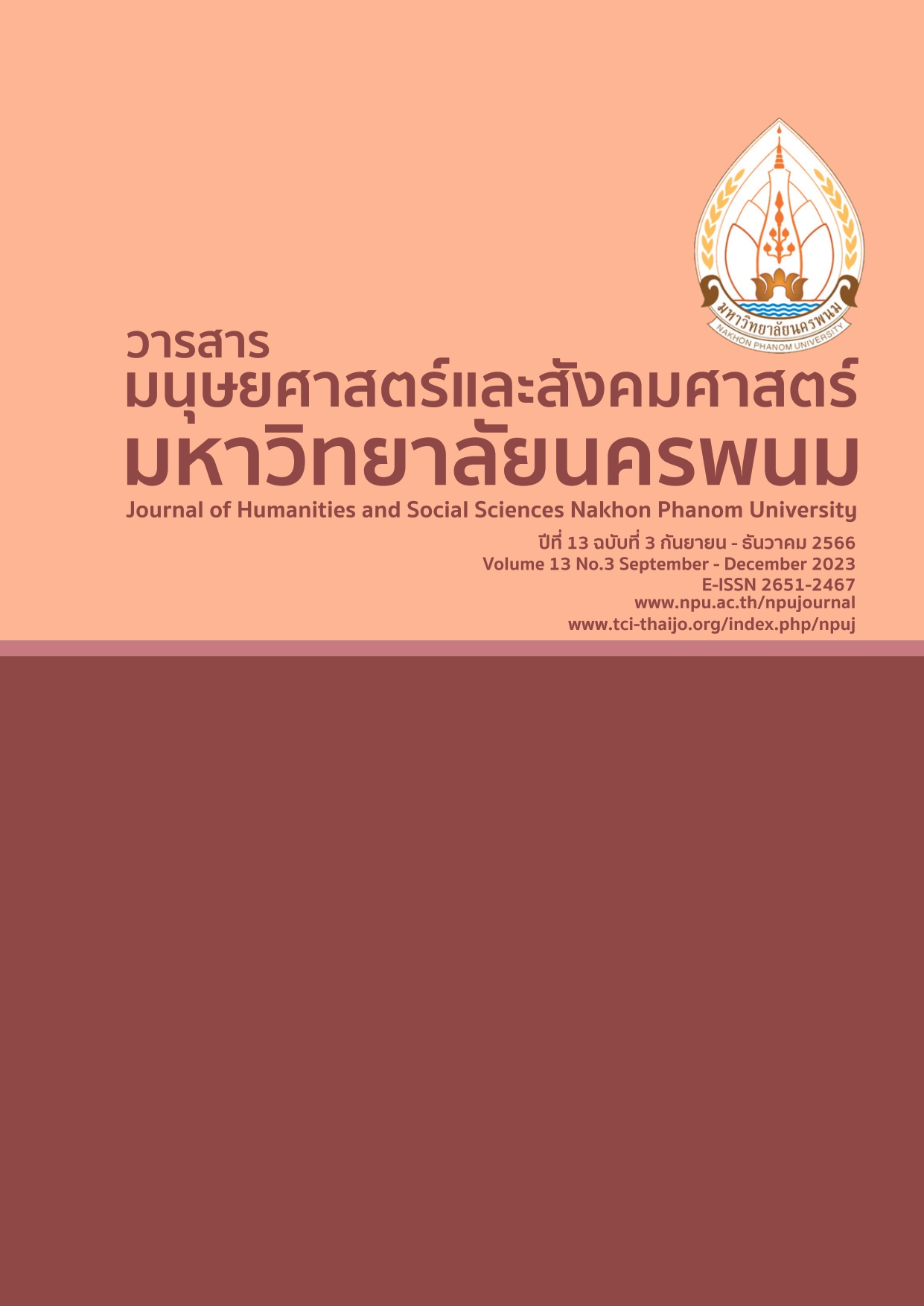Avoiding Self-bragging: How to Establish Effective Self-Credibility in a Persuasive Speech
Main Article Content
Abstract
This study aimed to 1) investigate persuasive techniques employed to establish a credibility and trust (ethos) in persuasive speeches, and 2) explore the techniques used in establishing a credibility and trust (ethos) in persuasive speeches. The rhetorical analysis was conducted to analyze Oprah Winfrey's speeches divided into two scenarios consisted of the speech that delivered at Harvard University Commencement Ceremony in 2013 and the one at the 75th annual Golden Globe Awards. The Aristotle's rhetorical theoretical framework was used to analyze focusing on ethos and persuasive techniques including similitude, deference, expertise, self-criticism, and inclination to succeed. The findings found that the notion of humility was primarily emphasized in both speeches of Winfrey by using the technique of deference. While self-criticism was more used in the Harvard University Commencement Ceremony speech, however it was not as prominent in the Golden Globe Awards speech. Additionally, it was observed that the characteristics of the audiences were also the principal role in choosing the techniques.
Article Details

This work is licensed under a Creative Commons Attribution-NonCommercial-NoDerivatives 4.0 International License.
References
Afzal, S. and Hassan, A. (2021). Using Rhetorical and Persuasive Techniques: A Political Discourse Analysis of the Victory Speech by Imran Khan. Journal of Communication and Cultural Trends. 3(2),105-121. https://doi.org/10.32350/jcct.32.05
Alderman, C. (2018). Ethos, pathos, logos: a script for clinical communication. Journal of Pharmacy Practice and Research. 48(4),301-305. https://doi.org/10.1002/jppr.1468
Alkaraan, F., Albahloul, M. and Hussainey, K. (2023). Carillion's strategic choices and the boardroom's strategies of persuasive appeals: ethos, logos and pathos. Journal of Applied Accounting Research. 24(4),726-744. https://doi.org/10.1108/JAAR-06-2022-0134
Agustina, S. (2021). Face-Saving and Face-Threatening Negotiation by Lecturers: Gender and Teaching Experience Differences. Language Literacy: Journal of Linguistics, Literature, and Language Teaching. 5(2),590-599. doi:10.30743/ll.v5i2.4527
Charteris-Black, J. (2018). Analysing political speeches: Rhetoric, discourse and metaphor. London : Bloomsbury Publishing.
Dayter, D. (2018). Self-praise online and offline: The hallmark speech act of social media? Internet Pragmatics. 1(1),184-203. https://doi.org/10.1075/ip.00009.day
de Villiers Scheepers, M. J., Barnes, R. and Garrett, L. K. (2021). Decoding the nascent entrepreneurial pitch. International Journal of Entrepreneurial Behavior & Research. 27(8),1936-1957. https://doi.org/10. 1108/IJEBR-10-2020-0673
Erkek, G. (2022). Activity suggestions to develop critical reading and writing skills. International Journal of Education and Literacy Studies. 10(2),65-70. http://dx.doi.org/10.7575/aiac.ijels.v.10n.2p.65
Ghazani, A. Z. (2016). Study of persuasive strategies in selected American presidential speeches. International Journal of Humanities and Cultural Studies. 3(2). 631-647.
Jovic, M., Kurtishi, I. and AlAfnan, M. A. (2023). The Persuasive Power of Hedges: Insights from TED Talks. World Journal of English Language. 13(5),200-212. https://doi.org/10.5430/wjel.v13n5p200
Kashiha, H. (2022). On persuasive strategies: Metadiscourse practices in political speeches. Discourse and Interaction. 15(1),77-100.
Landis, J. R. and Koch, G. G. (1977). The measurement of observer agreement for categorical data. biometrics, 33(1).159-174. https://doi.org/10.2307/2529310
Leech, G. N. (1983). Principles of pragmatics. London : Longman.
Maricchiolo, F., Gnisci, A., Bonaiuto, M. and Ficca, G. (2020). Effects of different types of hand gestures in persuasive speech on receivers’ evaluations. In Speech Accompanying-Gesture (pp. 239-266). London : Psychology Press.
McDonald, N., Schoenebeck, S. and Forte, A. (2019). Reliability and inter-rater reliability in qualitative research: Norms and guidelines for CSCW and HCI practice. Proceedings of the ACM on human-computer interaction. 3(CSCW),1-23. https://doi.org/10.1145/3359174
Mohamad, H. A. (2022). Analysis of Rhetorical Appeals to Logos, Ethos and Pathos in ENL and ESL Research Abstracts. Malaysian Journal of Social Sciences and Humanities (MJSSH). 7(3),1-19. https://doi.org/10. 47405/mjssh.v7i3.1314
Munazil, T. and Rababah, L. (2022). A Psycholinguistic Study of Persuasive Strategies Used in the Farewell Sermon of Prophet Mohammed (PBUH). Education and Linguistics Research. 8(2),1-16. https:// doi.org/10.5296/elr.v8i2.20003
Oeppen Hill, J. H. (2020). Logos, ethos, pathos and the marketing of higher education. Journal of Marketing for Higher Education. 30(1),87-104. https://doi.org/10.1080/08841241.2019.1683120
Özdil, S. and Duran, E. (2023). Development of Persuasive Speaking Skills Rubrics for Primary School Fourth Grade Students. International Journal of Education and Literacy Studies. 11(1),59-67. http://dx.doi. org/ 10.7575/aiac.ijels.v.11n.1p.59
Peeples, J. and Murphy, M. (2022). Discourse and rhetorical analysis approaches to environment, media, and communication. In The Routledge handbook of environment and communication (pp. 50-62). London : Routledge.
Taping, M. G., Juniardi, Y. and Utomo, D. W. (2017). Rhetorical devices in Hillary Clinton concession speech. Journal of English Language Studies. 2(2),225-240. http://dx.doi.org/10.30870/jels.v2i2.2249.g6864


